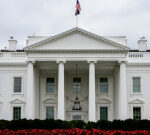United States President Donald Trump has threatened to impose tariffs of up to 300 percent on semiconductor imports, with exemptions for foreign companies that commit to manufacturing in the US.
Trump has cast the proposed tariff as a way to drive investment to the US, but experts say it could also disrupt global supply chains and even penalise companies already making chips in the US.
What are the details of Trump’s plan?
Few details have been released since Trump announced plans for a 100 percent tariff at a White House event on August 7.
The US president said exemptions would be given to companies that build research or manufacturing facilities in the US, but tariffs could be applied retroactively if they failed to follow through on their planned investments.
“If, for some reason, you say you’re building, and you don’t build, then we go back, and we add it up, it accumulates, and we charge you at a later date, you have to pay, and that’s a guarantee,” Trump told reporters.
On Friday, Trump told reporters on board Air Force One that more details would be announced soon and that the tariff could be much higher than previously suggested.
“I’ll be setting tariffs next week and the week after, on steel and on, I would say chips – chips and semiconductors, we’ll be setting sometime next week, week after,” Trump said en route to Alaska to meet with Russian President Vladimir Putin.
“I’m going to have a rate that is going to be 200 percent, 300 percent,” he added.
Why does Trump want to impose tariffs on chip imports?
Trump wants to impose a tariff on chips for several reasons, but the main one is to re-shore investment and manufacturing to the US, said G Dan Hutcheson, the vice chair of Canada’s TechInsights.
“The primary goal is to reverse the cost disadvantage of manufacturing in the US and turn it into an advantage. It’s mainly focused on companies that are not investing in the US,” Hutcheson told Al Jazeera.
“Exclusions are negotiable for entities that align with his goal of bringing manufacturing back to the US.”
More broadly, the tariff is also intended to address the US dependence on imported semiconductors and buttress Washington’s position in its ongoing rivalry with China, another chip-making powerhouse.
Both issues are bipartisan concerns in the US.
The Trump administration earlier this year launched a Section 301 investigation into alleged unfair trade practices in China’s semiconductor industry, and a Section 232 investigation into the national security implications of US reliance on chip imports and finished products that use foreign chips.
Who will be impacted by the tariff?




